As a highly efficient screening device, the oscillating screen, with its unique artificial oscillating motion, is widely used for material grading, impurity removal, and filtration in various industries, including mining, chemical, food, and pharmaceuticals. Its motor-driven eccentric mechanism causes the screen box to oscillate back and forth, accompanied by slight up and down vibrations. This ensures uniform distribution of material on the screen surface and rapid screening. However, over time, oscillating screens are subject to various malfunctions, influenced by factors such as material characteristics, operating environment, operating procedures, and equipment aging. Failure to promptly troubleshoot and repair these malfunctions not only affects screening efficiency and material quality, but can also damage the equipment and increase production costs. The following details common oscillating screen malfunctions, their causes, and corresponding repair methods, along with routine maintenance recommendations.
Decreased Screening Efficiency
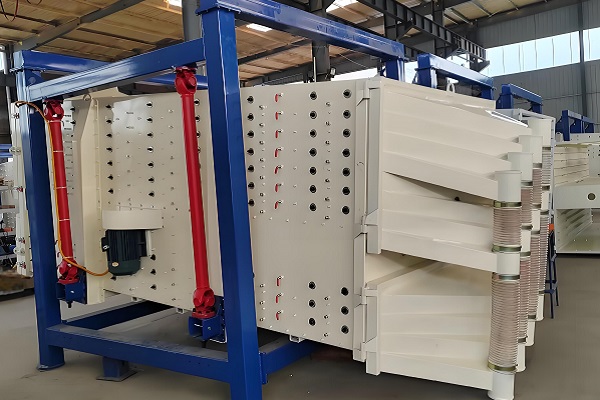
A. Symptoms
Under the same material input and screening conditions, the output of qualified material decreases significantly, the amount of qualified material remaining on the screen increases, or the purity of the screened material fails to meet process requirements, resulting in either excessively coarse or excessively fine particles.
B. Causes of Failure
1. Screen Problems: Screen apertures are worn and enlarged, causing coarse particles that should have been retained to pass through the screen, resulting in excessively coarse material underscreen. Damage or holes in the screen are not promptly discovered and repaired, allowing large particles to leak through the damaged areas, affecting screening quality. Insufficient screen tension causes significant elastic deformation during the swinging motion, disrupting the material's trajectory across the screen surface and preventing some material from fully contacting the screen, reducing screening efficiency.
2. Material Factors: High material humidity causes particles to adhere to each other, forming large agglomerates. These agglomerates cannot pass through the screen and accumulate on the screen surface, blocking the screen apertures and hindering the screening of other materials. Improper material size distribution: Excessive fine particle content can easily form a dense filter layer on the screen apertures, leading to blockage and increased screening resistance. Excessive material input exceeds the rated processing capacity of the swinging screen, resulting in excessive accumulation of material on the screen surface, preventing full screening within the specified time, and causing some qualified material to be carried over the screen.
3. Improper Equipment Parameter Settings: The swing screen's swing frequency and amplitude are improperly set. If the frequency is too low or the amplitude is too small, the material moves slowly across the screen surface, preventing rapid dispersion and stratification, prolonging screening time and reducing efficiency. If the frequency is too high or the amplitude is too large, the material will violently bounce across the screen surface, making it difficult for the material to pass through the screen steadily, and may even cause material splashing, also affecting screening performance.
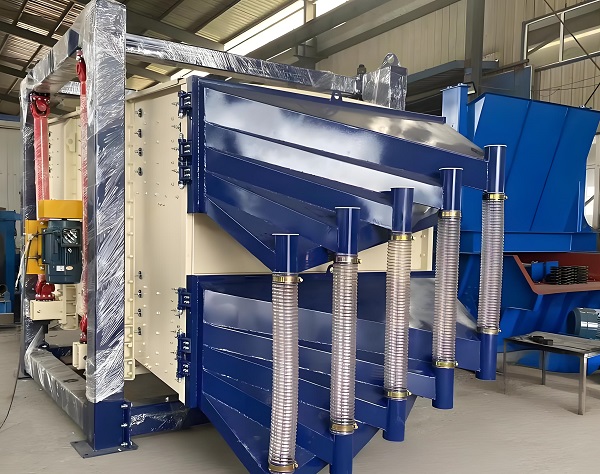
Screen Box Angle Deviation: The screen box of a swing screen is typically installed at a certain angle to facilitate material flow and screening. If the screen box angle is too large, the material's residence time on the screen surface is too short, resulting in it being discharged before being fully screened. If the angle is too small, the material flows slowly and easily accumulates on the screen surface, causing clogging of the mesh and reducing screening efficiency.
C. Maintenance Methods
1. Screen Inspection and Replacement: Regularly inspect the screen for wear. If the aperture is severely worn or cracks or holes appear, replace it promptly. Ensure the screen model is consistent with process requirements. If the screen is under-tensioned, readjust the tensioning mechanism, such as tightening the tensioning bolts or adjusting the tensioning mechanism, to maintain a flat and taut screen and prevent excessive deformation during operation.
2. Optimize Material Handling: If the material moisture is too high, add a drying process before screening to reduce moisture content and minimize adhesion. For materials with an unreasonable particle size distribution, adjust the particle size composition through pretreatment processes (such as crushing or grinding) to better meet screening requirements. Strictly control the material input and adjust the feed rate appropriately according to the rated processing capacity of the swing screen to avoid material accumulation.
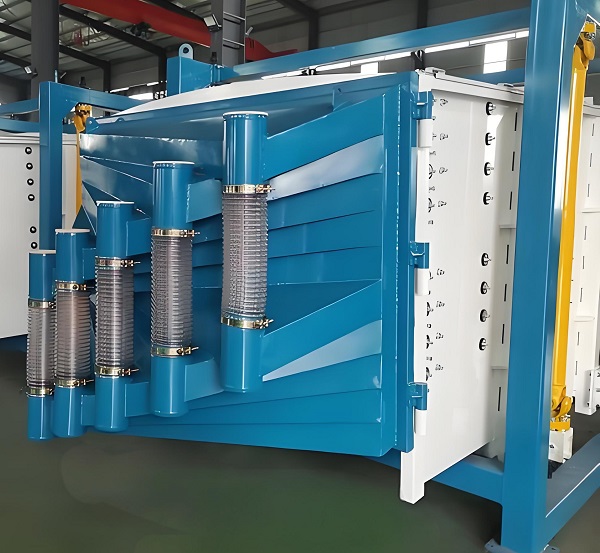
3. Adjust Equipment Parameters: Readjust the swing frequency and amplitude of the swing screen based on the material characteristics (such as particle size, density, moisture content, etc.) and process requirements. Generally speaking, for materials with larger particle sizes and higher densities, the amplitude and frequency can be increased appropriately to improve material movement speed and screening efficiency. For materials with smaller particle sizes and higher moisture content, the amplitude and frequency should be reduced appropriately to prevent material agglomeration and clogging of the screen apertures. After adjustments, a trial run should be conducted to observe the screening performance until optimal performance is achieved.
4. Correcting the screen box angle: Use a spirit level and angle measuring tools to check the actual installation angle of the screen box and compare it with the standard angle specified in the equipment manual. If there is any deviation, loosen the screen box's mounting bolts and adjust the support devices (such as gaskets and adjusting bolts) to restore the screen box's angle to the standard angle. Then, retighten the mounting bolts to ensure stable operation.
Abnormal Vibration and Noise

A. Symptoms
During operation, the screen box or machine body exhibits noticeable abnormal vibration. The vibration amplitude exceeds the normal range and is accompanied by a sharp, piercing noise. In severe cases, the entire equipment will resonate, affecting the surrounding environment and the normal operation of other equipment.
B. Causes of Failure
1. Eccentric Mechanism Failure: The eccentric mechanism is the core component that drives the swinging motion of the swing screen. It consists of an eccentric shaft, bearings, and bearing seat. Severe wear of the eccentric shaft reduces the shaft diameter, increasing the clearance between the shaft and the inner ring of the bearing. This can cause radial runout during rotation, leading to equipment vibration. Bearing damage (such as ball wear, cage fracture, or peeling of the inner and outer rings) can cause the bearing to operate improperly, generating severe friction and, in turn, vibration and noise. A loose bearing seat, or loose or broken bolts connecting it to the machine body, can cause the bearing seat to shift during operation, disrupting the normal motion of the eccentric mechanism and causing abnormal vibration.
2. Motor Problems: The motor is the power source of the swing screen. Loose bolts securing the motor base can cause the motor to wobble during operation, causing vibration throughout the entire machine. Unbalanced rotors, such as loose rotor components, uneven wear, or misaligned assembly, can generate centrifugal force during rotor rotation, causing motor vibration that is transmitted to the machine body. Damaged or poorly lubricated motor bearings can generate frictional noise and vibration during operation, affecting the stable operation of the machine.
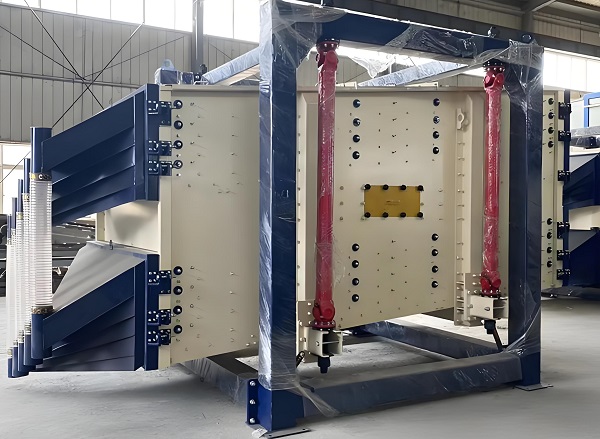
3. Material imbalance: Uneven material distribution on the screen surface, with excessive material accumulation on one side and insufficient material on the other, can cause the screen box's center of gravity to shift, generating an unbalanced torque during the swinging motion and causing abnormal vibration. Improper feed port placement or unstable feed rate can cause material to impact a specific area of the screen surface, resulting in uneven force on the screen surface and, in turn, equipment vibration.
4. Loose or damaged connectors: The various components of a swing screen (such as the screen box, frame, and support device) are connected by connectors such as bolts, nuts, and pins. If these connectors become loose, fall off, or damage over time, the gaps between the components increase, causing collisions and friction during operation, resulting in abnormal vibration and noise. Furthermore, loose bolts connecting the screen to the screen frame can cause the screen to wobble during operation, colliding with the frame and generating noise.
C. Repair Methods
1. Inspecting the eccentric mechanism: First, disconnect the power to the swing screen, stop the machine, remove the protective cover of the eccentric mechanism, and inspect the eccentric shaft for wear. If the shaft diameter wear exceeds the allowable range, replace the eccentric shaft with a new one. Check the bearing operation by manually rotating the outer ring. If you feel any sticking, unusual noise, or looseness, the bearing is damaged and needs to be replaced promptly with a bearing of the same model. Check the bearing seat mounting bolts. If they are loose, tighten them to the specified torque using a torque wrench. If the bolts are broken, replace them with new high-strength bolts, ensuring that the bolts are of the required material and specifications. After replacing the parts, add an appropriate amount of grease to the bearings to ensure proper lubrication.
2. Motor Repair: Check the motor base mounting bolts. If they are loose, tighten them with a wrench. If the bolts are damaged, replace them with new ones and install lock washers to prevent further loosening. If the motor rotor is unbalanced, disassemble the motor and send it to a professional repair facility for dynamic balancing and calibration to ensure that the centrifugal force during rotor rotation is within the allowable range. Inspect the motor bearings. If damaged, replace them. If the bearings are poorly lubricated, clean the old grease from the bearings and add an appropriate amount of new grease (the grease type should comply with the motor manual) to ensure smooth operation.
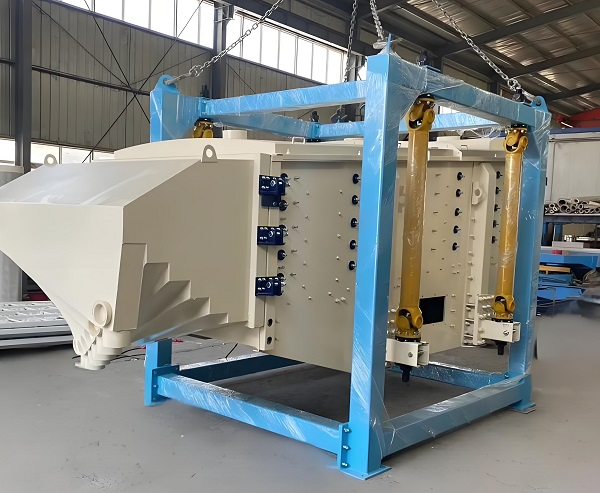
3. Adjust material distribution: Check the position and feed rate of the feed inlet. If the feed inlet is improperly positioned, causing material to impact a concentrated area of the screen surface, adjust the feed inlet to ensure even distribution across the width of the screen surface. If the feed rate is unstable, check the operation of the feeding equipment (such as feeders, conveyor belts, etc.) and adjust the feed rate to ensure uniform and stable material entry. During the screening process, if uneven material distribution is observed on the screen surface, adjust the screen's diversion devices (such as baffles and guide plates) to guide material flow and prevent accumulation.
4. Tighten and replace connectors: Thoroughly inspect the connectors between all components of the swing screen, including bolts, nuts, and pins. Tighten loose bolts and nuts to the specified torque using an appropriate wrench. Replace damaged or broken connectors promptly to ensure a secure connection. Check the bolts connecting the screen to the screen frame. Tighten any loose bolts and replace the locknuts if necessary to prevent the screen from shaking during operation. Additionally, inspect the structural integrity of the frame and support devices. Any deformation of the frame or damage to the support devices should be repaired or replaced to ensure overall stability.
Motor Overheating
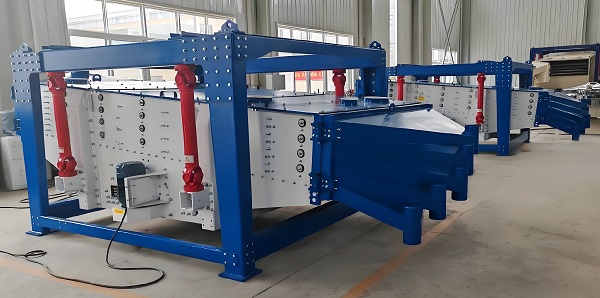
A. Symptoms
After the swing screen has been running for a while, touch the motor housing and feel it is overheated (normally, the normal operating temperature of the motor housing should not exceed 60-70°C; if it exceeds 80°C, it is considered overheating). This may be accompanied by a decrease in motor speed and output power. In severe cases, the motor protection device may activate, cutting off the power supply and causing the equipment to shut down.
B. Causes of Failure
1. Excessive Load: The material input exceeds the rated processing capacity of the swing screen for a long period of time, causing the motor to operate at full or overload for a long period of time. This increases the motor's output power and the current exceeds the rated value, generating excessive heat in the motor windings that cannot be dissipated in time, causing the motor to overheat. Furthermore, if the screen holes are severely clogged, material cannot pass through the screen properly, and excessive material accumulation in the screen box also increases the load on the motor, causing overheating.
2. Poor Motor Heat Dissipation: The motor's cooling fan is damaged, or the fan blades are deformed or broken, preventing it from rotating properly. This prevents the heat generated by the motor from being dissipated into the air through the fan. A large amount of dust, oil, and other debris accumulates on the motor casing, blocking the cooling holes and affecting the motor's heat dissipation efficiency. The ambient temperature around the motor is too high, such as when the equipment is installed in a high-temperature workshop or near a heat source, resulting in poor air circulation and poor heat dissipation.
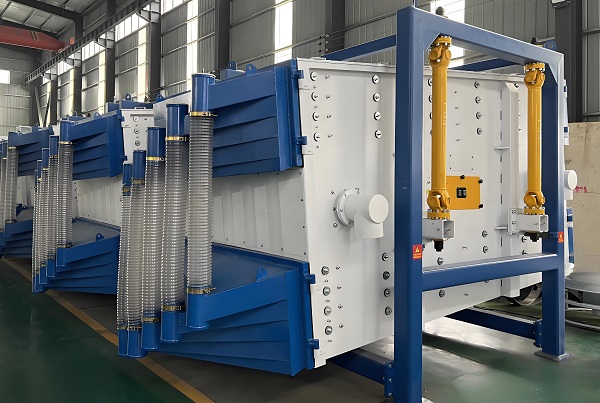
3. Motor Winding Failure: Aging, damage, or corrosion by oil, dirt, or moisture can cause short circuits between windings or between the windings and the motor housing. This short-circuit current generates significant heat, causing the motor to overheat rapidly. Loose or poorly connected winding terminals create contact resistance when current flows, leading to localized overheating and affecting the temperature of the entire motor. Insufficient turns or defects in the winding process can degrade the motor's electromagnetic performance, increase current flow during operation, and generate excessive heat.
4. Power Supply Issues: Unstable power supply voltage, either too high or too low, can affect the proper operation of the motor. Excessive voltage increases the excitation current in the motor windings, increasing iron losses and generating excessive heat. Excessive voltage reduces the motor's output torque, increasing the motor current to maintain normal speed, leading to winding overheating. Furthermore, an unbalanced three-phase power supply, such as low voltage or a disconnection in one phase, can cause current imbalance in the three phases of the motor, generating a negative sequence magnetic field, increasing losses in the motor, and causing overheating.
C. Maintenance Methods
1.Reduce Equipment Load: Strictly control the material input. Adjust the feed rate appropriately based on the rated processing capacity and actual screening performance of the swing screen to avoid material overload. Regularly check the screen for blockage. If clogged, clean the mesh promptly (e.g., using compressed air, brushing, or removing the screen for cleaning) to ensure material can pass through the screen normally and reduce the load on the motor. If material characteristics change (e.g., increased particle size or moisture), reassess the equipment's processing capacity and, if necessary, implement appropriate pretreatment measures (e.g., crushing or drying) to reduce the material load on the equipment.
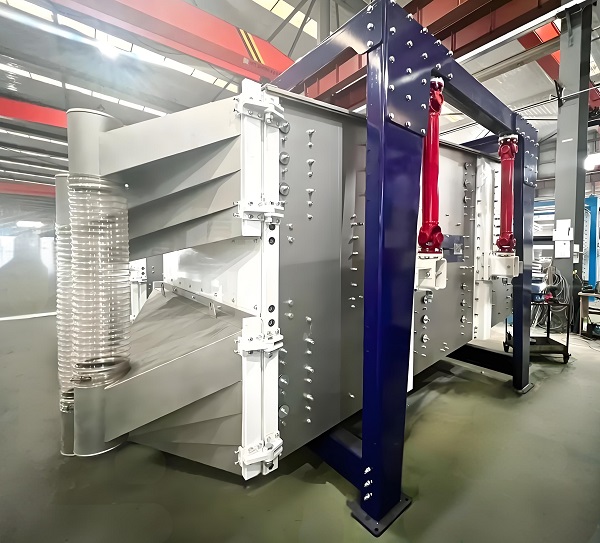
2. Improve Motor Cooling: Check the motor's cooling fan. If damaged, replace it. If fan blades are deformed or broken, repair or replace them to ensure proper fan rotation and effective heat dissipation. Regularly clean dust, oil, and other debris from the motor casing. Use compressed air or a soft-bristled brush to clean the cooling holes to keep the motor casing clean and improve heat dissipation efficiency. If the ambient temperature around the motor is too high, take measures to ventilate and cool it, such as installing an exhaust fan, improving workshop ventilation, or installing the motor away from heat sources to prevent prolonged operation in a high-temperature environment.
3. Repairing the Motor Windings: If a short circuit or insulation damage occurs in the motor windings, a professional motor repair technician must perform an inspection. First, disassemble the motor, remove the rotor, and perform an insulation test on the windings (for example, using a megohmmeter to measure the insulation resistance) to determine the location of the short circuit or damage. Minor insulation damage can be repaired with insulating varnish. If a severe short circuit or insufficient turns occur, the windings must be rewound. Rewinding must strictly adhere to the motor's technical specifications (such as number of turns, wire diameter, and wiring method). After winding, perform insulation treatment and drying to ensure that the windings meet the required insulation and electromagnetic performance. After repair, perform a no-load and load test run on the motor to check parameters such as temperature, speed, and current to confirm normal operation.
4. Stabilize the power supply: Contact the power supply department to check the voltage of the power supply line and ensure that it is stable within the allowable range of the motor's rated voltage (generally ±5% of the rated voltage). If the voltage fluctuates significantly, install a voltage stabilizer (such as an AC voltage stabilizer) at the motor input to stabilize the supply voltage. Check the balance of the three-phase power supply and measure the three-phase voltage with a multimeter. If any phase voltage is too low or disconnected, immediately troubleshoot the power supply line (such as poor contact or a broken wire) and repair the problem before restarting the motor. Additionally, check the motor terminals to ensure they are secure and in good contact to prevent motor overheating caused by wiring problems.
Daily Maintenance Recommendations
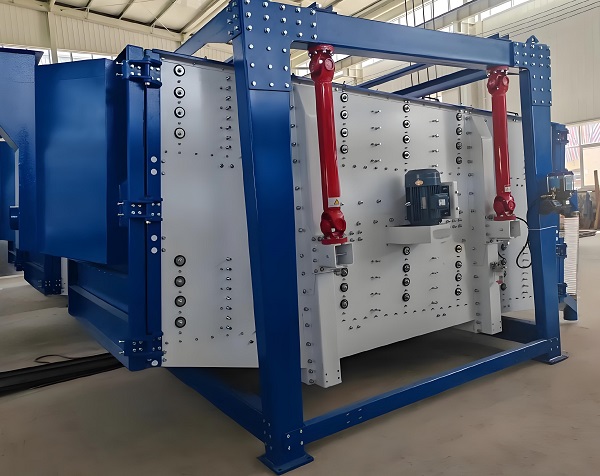
To reduce the frequency of swing screen failures, extend the equipment's service life, and ensure long-term stable operation, it is important to establish a comprehensive daily maintenance system and regularly inspect, service, and maintain the equipment. Specific recommendations are as follows:
1.Regular Inspections: Before starting the machine daily, check the machine's appearance for integrity, loose connections (such as bolts, nuts, and pins), screen damage, proper tension, and the inlet and outlet for unobstructed access. During operation, closely monitor vibration, noise, and temperature, and promptly shut down the machine to address any abnormalities. After shutdown, clean any remaining material on the screen surface, check for blockages in the screen, and remove any debris from the screen openings. Weekly, inspect key components such as the eccentric mechanism, motor, and bearings for wear, looseness, and oil leakage. Check the motor's current and voltage for normal operation. Perform a comprehensive monthly inspection of the machine, including the screen box angle, support mechanism, and transmission system.
Ensure that all equipment performance parameters meet requirements.
2. Lubrication and Maintenance: Regularly lubricate the equipment's moving parts, such as the eccentric shaft bearings, motor bearings, and transmission components. Select the appropriate type of grease or oil according to the equipment manual and add or replace lubricants according to the specified lubrication intervals and lubrication quantities. During lubrication, ensure the lubrication areas are clean to prevent impurities from entering the grease or oil, which could affect lubrication effectiveness. Generally, eccentric shaft bearings require grease every 100-200 hours of operation and grease replacement every 1000-2000 hours of operation. The lubrication interval for motor bearings can be determined according to the motor's manual.
3. Screen Maintenance: The screen is a core component of the swing screen, directly impacting screening efficiency and quality, and therefore requires significant maintenance. Avoid dropping large hard objects or metal debris into the screen to prevent damage. Regularly inspect the screen for wear. If the mesh is excessively worn or damaged, replace it promptly. When replacing the screen, ensure it fits snugly against the frame and maintains proper tension to prevent wobbling or deformation during operation. For easily clogged screens, periodically use compressed air to purge or tap the frame to clear the material from the mesh and prevent clogging.
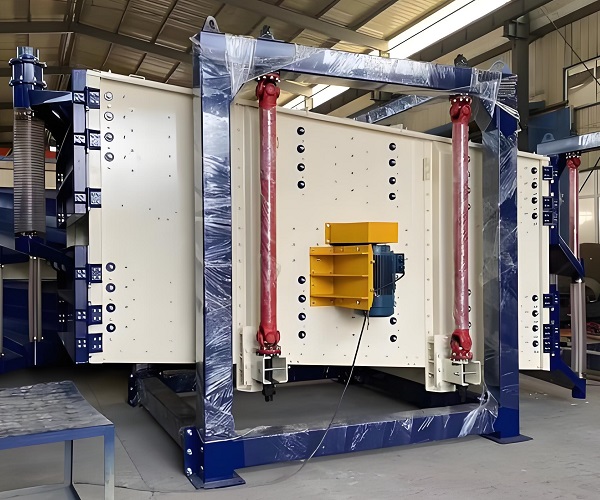
Equipment Cleaning: Maintain the cleanliness of the equipment. Regularly clean dust, oil, and material residue from the surface to prevent it from entering and affecting normal operation. Use compressed air, a soft-bristled brush, or a damp cloth to clean the equipment. Avoid using highly corrosive cleaning agents to prevent corrosion. Pay special attention to cleaning areas such as the feed inlet, discharge port, and screen frame to ensure smooth material flow.
4. Operator Training: Strengthen operator training to familiarize operators with the operating principles, operating procedures, common faults, and troubleshooting methods of the swing screen. Before starting the machine, operators should check that all equipment preparations are in place and strictly follow operating procedures to avoid equipment failures caused by improper operation. During operation, operators should closely monitor the equipment's operating status, promptly shut down the machine if any abnormalities are detected, and report them to maintenance personnel. Operators should also be regularly assessed to ensure they possess proficient operating skills and emergency response capabilities.
Common malfunctions of swing screens include decreased screening efficiency, abnormal vibration and noise, and motor overheating. Accurately analyzing the cause and implementing effective repair methods for each malfunction requires precise analysis. Furthermore, establishing a comprehensive daily maintenance system that includes enhanced equipment inspection, lubrication, cleaning, and operator training can effectively reduce malfunctions, improve equipment operational stability and service life, and provide strong support for the company's production and operations.
Save Time! Get A Detailed Quotation Quickly.
